 |
10% off on
web orders over $100 |
|
|
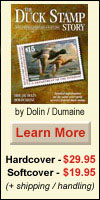
|
|
Florida 2002 Error
The Florida 2002-03 waterfowl stamp has the dubious distinction of being the only state stamp issued in reverse — at least to my knowledge. The stamp error is a mirror image of the artwork and was detected by the artist when he received the stamps to be matched to prints.
Figure 1 shows a print of the original painting, depicting a mottled duck in flight, by artist John Nelson Harris.
The stamp itself is quite attractive. Harris painted the duck flying from left to right, and published the print the same way. But somehow the actual stamp issued by the state showed the duck going the wrong way — from right to left! It is pictured at right in Figure 2.
The error was not noticed until all the stamps were printed, and the distribution process to state agents was already well along.
Some may think the design flip-flop is a minor matter — but not to the artist.
According to Harris, “The design is copyrighted by the artist and used by the state under contract with the artist. However, in this case they made the mistake and had already issued many of them to the public before I found out about the error.
“I alerted them to this mistake and had them destroy all the artist stamps and then print them properly as per the copyrighted image.”
The state catered to his demands, as they should have done, and reprinted 1,008 stamps with the left-to-right flying duck. At 12 stamps per pane, 84 sheets were reprinted. One of the reprints is pictured below in Figure 3.
Another difference in the revised issue is that its stamps are rouletted on all four sides. The first stamp with the flopped fowl was a die-cut issue.
The reprinted stamps were used by the artist for sale with prints, and the ones not needed for prints were sold publicly. Tens of thousands of the incorrectly designed stamps had already been distributed, so those with the corrected design are far scarcer than the error stamps.
Some similar problems in the transition from artwork to stamp have occurred in the past — but only a few.
Among waterfowl stamp issues, the first reversed print occurred on the 1941 federal issue by E.R. Kalmbach, when the art prints were printed in reverse to the stamp image. This type error is called a reversed or “flopped” print.
The error in plating was discovered soon after printing began, and the presses were stopped. The plate was turned over, and printing resumed, thereby creating the second edition of the art print. Today, the first (reversed) edition of that print lists for $4,000, and the second (normal) for $1,700, making the error print more than double the value of the correct image.
The same problem again occurred on the 1944 issue by Walter A. Weber. That first edition lists at $4,500, versus $2,750 for the second edition and $1,300 for the third.
Both these error issues happened during the days of World War II, when many men were away from their normal jobs. Perhaps the lack of a skilled pressman was a factor in the creation of the “flopped” prints.
Such errors are easy to make and understandable.
In 1980, the Nevada stamp by Dick McRill was issued the same as the original painting, but the artist’s prints were issued reversed. Those prints were never corrected, so all that exist are the opposite image of that on the stamps.
The 1983 Michigan stamp, Wood Ducks by Rod Lawrence, also was issued in a flopped format, but was never corrected.
Please note that I attempt to keep collectors aware of the news-making duck stamp issues, and in so doing some columns will involve myself. In fairness, I must say I have acquired some of the Florida stamps. It is not my intent to sell stamps in this column, but to make collectors aware of their existence and offer full disclosure.
•
In my column in the Dec. 2 Stamp Collector (page 18), the subject of remarqued stamps was covered. A remarque is a French word, loosely meaning redrawn, and is a technique used by artists to paint an original image on a stamp or print.
Such a remarqued 1959 duck stamp, the popular King Buck black Labrador stamp, was offered by Robert A. Siegel Auctions in the firm’s Dec. 17, 2002 auction, as lot 1571. This remarque plate number single fetched $495, including the 10% buyer’s commission.
This is the first instance of a major public auction house selling a remarqued stamp of which I am aware.
The item is shown at left in Figure 4.
The stamp was signed by the artist, Maynard Reece, and remarqued by Ken Michaelsen in recognition of Reece’s work. Reece himself no longer does remarques, although he is an active artist. Reece was a five-time winner of the federal stamp design, for the 15th, 18th, 26th, 36th and 38th stamps.
Figure 1:
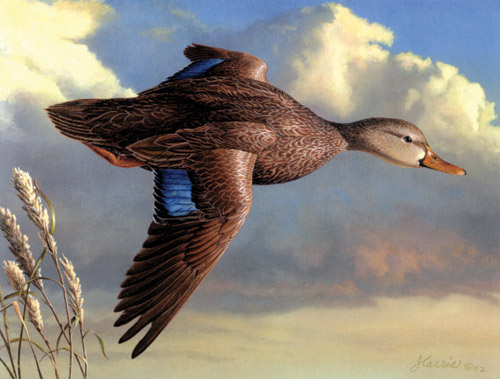
Figure 2:
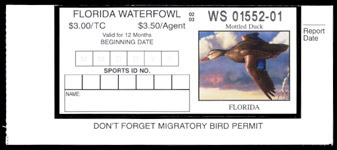
Figure 3:
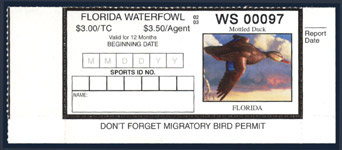
Figure 4:
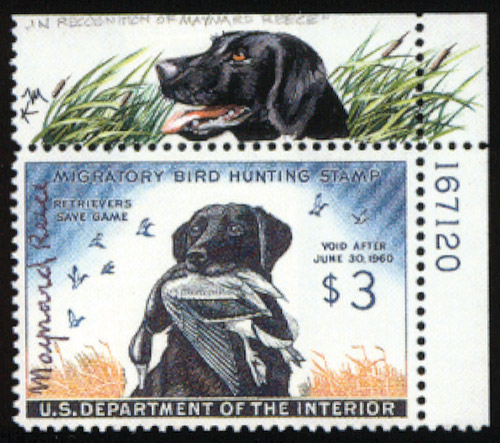
|
|
|



















